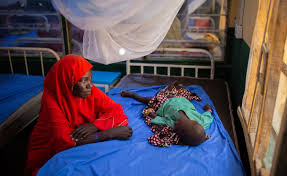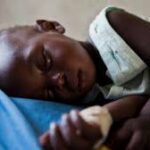Beyond the Body Count: Malaria’s Economic Toll on Africa

alaria is not just a health crisis—it’s an economic catastrophe for Africa. Every year, the disease drains billions of dollars from economies through healthcare costs, lost productivity, and slowed development. While the human toll is devastating, the hidden financial impact keeps families trapped in poverty and nations struggling to achieve growth. Understanding this burden is critical to mobilizing stronger investment in malaria elimination.
The Direct Economic Costs
-
Healthcare Expenditure
-
Malaria consumes up to 40% of public health budgets in some African countries.
-
Families spend heavily on diagnosis, medicines, hospital stays, and transport.
-
-
Out-of-Pocket Expenses
-
In Nigeria, a family can spend up to 25% of monthly income treating a single malaria case.
-
For poor households, repeated malaria infections can push families deeper into debt.
-
-
Donor and Government Spending
-
Billions in aid flow into malaria programs annually, but local governments still shoulder high costs to sustain prevention and treatment.
-
The Indirect Economic Costs
-
Lost Productivity
-
Malaria causes more than 200 million missed workdays across Africa each year.
-
In agriculture-dependent economies, malaria strikes hardest during planting and harvest seasons, reducing food supply and income.
-
-
Education Disruption
-
Children miss school frequently due to illness or caring for sick relatives.
-
Studies link malaria to lower educational achievement and reduced lifetime earnings.
-
-
Impact on Foreign Investment & Tourism
-
Malaria-endemic regions are often perceived as risky for investors.
-
Tourism industries in countries like Kenya and Tanzania lose millions yearly due to malaria-related concerns.
-
Numbers That Speak Loudly
-
Malaria reduces Africa’s GDP growth by up to 1.3% annually (World Bank).
-
Households in sub-Saharan Africa spend an estimated $12 billion yearly in out-of-pocket malaria costs.
-
In highly endemic regions, families may experience 2–5 malaria episodes per year per child, magnifying costs.
The Cycle of Poverty and Malaria
Malaria and poverty are deeply intertwined:
-
Poor families cannot afford mosquito nets or treatment.
-
Illness reduces earning potential.
-
Lower income limits access to prevention and healthcare.
This vicious cycle perpetuates inequality and stalls Africa’s development goals.
Breaking the Economic Burden
To reduce malaria’s financial toll, Africa must:
-
Invest in Prevention
-
Scaling up ITN distribution is cost-effective—every $1 spent saves up to $6 in treatment and productivity losses.
-
-
Expand Access to Vaccines
-
The new RTS,S vaccine offers a breakthrough in reducing child illness and deaths, cutting both health and economic costs.
-
-
Strengthen Health Systems
-
Training more health workers and ensuring consistent drug supply reduces expensive hospital admissions.
-
-
Leverage Technology
-
Digital platforms like HubPharm’s AI health companion can enhance medication adherence and reduce repeated infections.
-
Regional Success Stories
-
Zambia – Scaling up prevention reduced malaria hospitalizations by 53%, saving millions in health costs.
-
Ethiopia – Community-led net distribution improved productivity in farming regions.
-
Rwanda – Nationwide campaigns cut malaria incidence, boosting school attendance and labor force participation.
Conclusion
Malaria costs Africa far more than hospital bills—it robs families of income, children of education, and nations of growth. Eliminating malaria is not just a health imperative, it’s an economic strategy. By investing in prevention, vaccines, and strong health systems, Africa can unlock billions in productivity, reduce poverty, and accelerate development.
At HubPharm Africa, we are committed to making malaria prevention and treatment affordable and accessible, helping families break free from the economic trap of this disease.
Written by Fawzi Rufai, Medically Reviewed by Sesan Kareem



